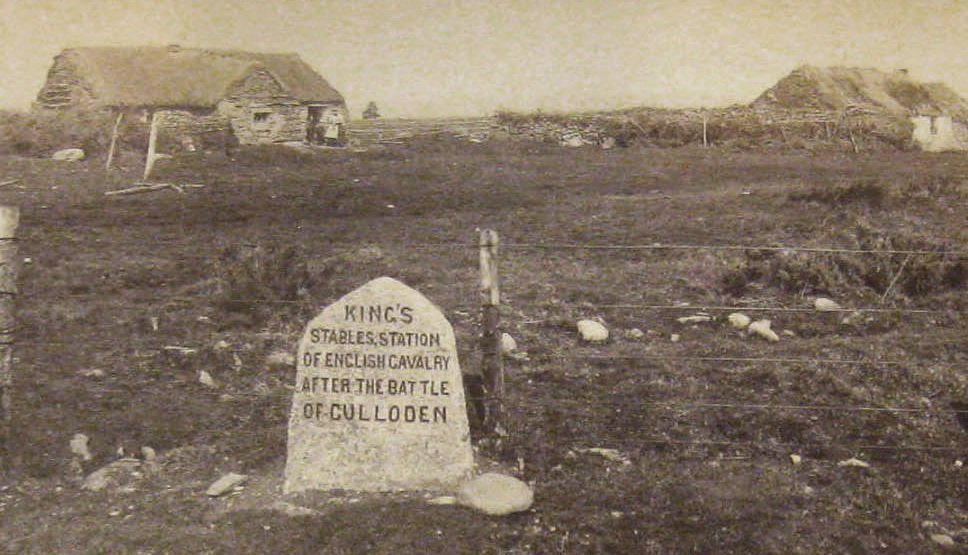
The following antique vintage photograph was acquired during a house clearance & unwanted by the families or owners of the properties cleared.
Battle Of Culloden Facts
The Battle Of Culloden was the bloodiest of all the Jacobite battles. It was also the last battle fought on British soil.
The Battle of Culloden was fought on Drumossie Moor, to the north east of Inverness, on April 16, 1746.
The battle ended within the hour: the Jacobite forces, with the wind and rain against them, succumbed to the government’s army.
Jacobite morale was low. Hunger saw the men spreading out wide to find their own food, some of them breaking ranks for home.
On the long march back to Scotland, the Highland Army wore out its boots and demanded all the boots and shoes of the townspeople of Dumfries as well as money and hospitality.
The battle began with an artillery barrage by the Hanoverian forces. It lasted only a few minutes, but cut down many of the prince’s men before they had a chance to charge.
One of the many myths of this event is that it was a Scottish versus English affair. In fact, far more Scots supported and fought on the Hanoverian side than on the Jacobite.
Forces led by Charles Edward Stuart – better known as Bonnie Prince Charlie – led the Jacobites, comprised mainly of Highland clansmen.
On the night of the 15th, a mismanaged strike was launched on Cumberland’s camp which achieved nothing, resulting only in sleepless, hungry Highlanders for the next day.
Jacobite casualties are estimated to have been between 1,500 and 2,000, while only 50 deaths and 239 wounded were recorded on the opposing side.
80 rebel officers, like Lord Balmerino, Lord Lovat and Lord Kilmarnock were taken prisoner at or shortly after the battle and tried in London.
Cumberland’s troops were made up of English veterans fresh from Europe and over 4,000 Scots: more Scots were facing Charles than were standing next to him.
The Battle took place South east of Inverness and a few miles south west of Nairn in Scotland.
The term Jacobite comes from the name ‘Jacobe’, which is Latin for James.
The Jacobites were outnumbered around 9000 to 6000, and the ground was too marshy to accommodate the Highlanders’ favourite tactic – the headlong charge into the enemy’s ranks.
It is said Cumberland gave orders for “No Quarter Given”: in other words ‘none shall live’ – however it appears this was actually added to the foot of Cumberland’s written orders by some unknown person.
Many of the Highlanders headed for Inverness and were hunted down and killed without mercy by Cumberland’s dragoons.
One of their first acts after the battle was to try to catch the Prince himself, who had eluded them by slipping away from the battlefield while the fighting was still going on. Charles fled the mainland and made for the Hebrides, outwitting both a massive military cordon and a reward of £30,000.
In 1881, Duncan Forbes erected the headstones that mark the mass graves of fallen Jacobite soldiers. They lie on either side of an early 19th-century road which runs through the battlefield.
